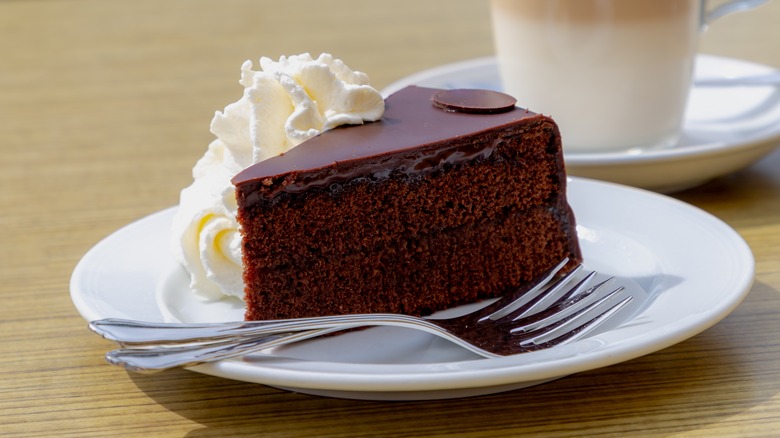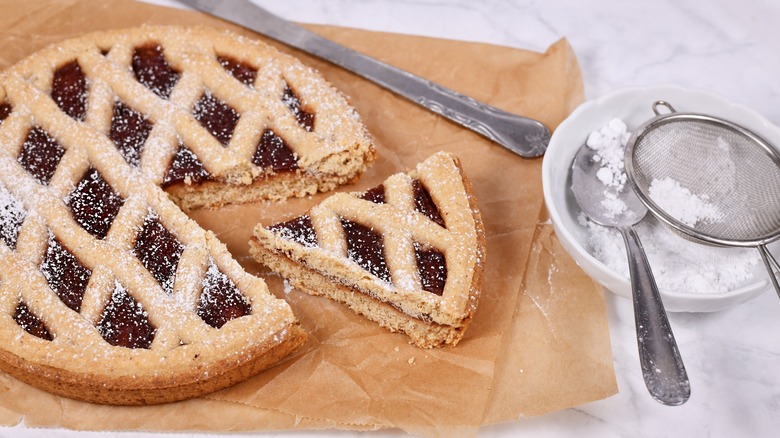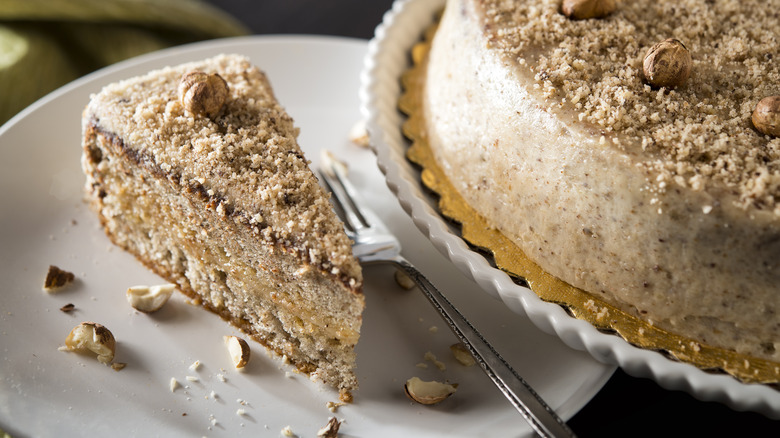What Is A Torte And How Is It Different From A Standard Cake?
If you love cake but are bored with the same classic flavors, a torte is the dessert for you. Originally from European countries like Germany and Austria, a torte is a type of cake that is made with ground nuts and breadcrumbs, and little to no flour. This significantly changes the texture, making it denser and more moist than other cakes. Because of this, tortes don't rise like typical cakes, so they're a bit more compact than what you might be used to — in fact, you could think of a torte as the elevated, more mature version of a classic cake.
Tortes are usually less flashy than standard cakes, too. Sometimes they have icing on them, but tortes are usually glazed or topped with fresh chocolate ganache or fruit compote. If you're the person who scrapes overly sweet icing off of cake, a torte might be a better alternative for you. These grown-up cakes are rich, complex, and will satisfy your dessert cravings.
Different types of torte
If you're looking to try a torte, there are a few basic variations you should know. The first is the classic flourless chocolate torte. This decadent dessert is relatively easy to find, often offered on restaurant menus or at bakeries. It's dense and full-flavored, akin to a cross between chocolate pudding and chocolate cake.
Linzer tortes, hailing from Central Europe, are regarded as one of the world's oldest known recipes for cake. These tortes incorporate fruit fillings for a fresh twist, and are often topped with powdered sugar or whipped cream. Linzer tortes are the most distinct type of torte from cake, yet they remain distinct from a tart or a pie because of their ground nut-based crust, as opposed to puff pastry or a flaky butter pie crust.
Esterházy torte, hailing from Hungary, is known for its texture and flavor. This torte consists of layers of almond macaroon-like dough and buttercream. It's sweet, textured, and indulgent, yet it still looks distinctly cake-like.
The impressive history of torte
Torte has a long history, dating back to 1832 in Austria. At that time, the Austrian State Chancellor, Prince Klemens Wenzel von Metternich, aimed to impress his guests with a delightful dessert course. However, with the head chef of the kitchen ill, the responsibility fell to Franz Sacher, his 16-year-old apprentice. Sacher devised the first-ever Sacher-Torte, and the court's guests were not only impressed by his talent, but also became enamored with this new and innovative concoction. Torte quickly gained popularity in Austria, and is now recognized as one of Austria's classic sweet treats.
Today, tortes are typically reserved for special occasions. Given that it was initially served to Austria's high court, it is still often served at upscale restaurants, and during celebrations like anniversaries and Valentine's Day. Due to its decadence, torte is usually served in small slices. Furthermore, it's not uncommon for certain tortes to be naturally gluten-free, allowing more people to enjoy them (though it's always best to verify with the restaurant). Its richness makes it an ideal companion for coffee or red wine, so to round off your perfect dessert course, don't overlook the beverages.
Next time you spot torte on a restaurant menu, give it a try to experience the elegance of this European delicacy. And remember, even if there's no special occasion, torte is a straightforward dessert to prepare at home.



